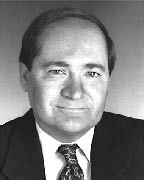2,500+ scientific expert reviewers, 800+ contributing authors, 450+ lead authors from 130+ countries. Six years work, four volumes and one report titled "Climate Change 2007" is, according to the IPCC (International Panel on Climate Change) (www.ipcc.ch), "a comprehensive and rigorous picture of the global present state of knowledge of climate change." Rocket science.
I live in New England and have to turn on my air conditioner in October. Common sense. Weather patterns are changing.
The goal of the Consortium for Energy Efficiency, Inc. (www.cee1.org) is to promote the adoption of energy-efficient technologies, and the group particularly sites the Energy Star program, a federal program that promotes energy-efficient products. Believing that businesses benefit financially by continually improving their management of energy resources, American Window Film, Inc., an Energy Star partner, carries 3M Company window film products that have met Energy Star's comprehensive and stringent energy efficiency guidelines.
Advances in window films to reduce heat gain through windows in warmer months and heat loss in winter months have been significant. 3M Company has produced a series of window films designed to conserve energy. Low-E (emissivity) window films are inexpensive compared to window replacement. Some feature unique Wavelength-Selective metals which block more of the solar spectrum than conventional metals enabling better performance and light transmission. In cooler climates, 3M Window Films work to save energy by reflecting indoor heat back into the room. This can reduce heat loss by up to 23% to 30% and can reduce air conditioning costs by blocking 55% to 73% of the sun's heat. 3M Window Films are also protected with an effective abrasion resistant coating for long-term durability and maintained appearance. Applied to the inside of windows, a quick, clean installation of window film creates little disruption to the flow of business.
Commercial customers easily justify their investment in 3MWindow Film by the utilities cost savings they provide. Through the use of monitoring equipment and 3M's sophisticated energy analysis software, we can provide a comprehensive energy analysis that includes Return-On-Investment projections for large commercial customers. Many installations pay for themselves within three years conservatively. As energy prices rise, payback will come even sooner.
3M Company is the only window film manufacturer that produces their own raw materials such as polyesters, metals, scratch-resistant coatings and adhesives. Window film is only as good as its adhesive. A bad adhesive will produce bubbling and blistering -- distortions created by thermal cycling that can result in seal failure. Unlike others, 3M's ultraviolet inhibitors are included directly in their adhesive. This ensures lifelong clarity and reduces UV degradation, thus providing long-lasting protection from fading of fabrics and furnishings.
3M Company began the history of window film with their patent application for a metallized solar control window film in 1961. Responding to demand, 3M introduced ultraviolet light control films, low reflectivity, high optical clarity and shatter-resistant films over ensuing decades. Their current product line not only saves energy expense, they also reduce fading of fabrics and furnishings, increase occupant comfort, reduce glare, and improve a building's safety and security as well as its overall aesthetics. Applied to various types of glass, they produce customized glazing systems capable of increasing or decreasing solar gains according to climate, aesthetics, security enhancements, and U.V. protection desired.
An ISO9002 certified facility, 3M continues to place emphasis on research and development. With their Prestige Series window films, 3M responds to demand for a high clarity, low reflectivity, non-metallic window film. These films reject up to 97% of Infrared without using metals -- a critical advantage over 3M Company's window film competitors. Metals can corrode over time in moist conditions and can interfere with cell phone signals and Wi/Fi transmissions. 3M Prestige Window Films unconditionally guaranty against corrosion. They reflect and absorb 99.9% of the UV light that fades fine furnishings, and they do this by aligning more than 200 layers of polymers in a total thickness that is less than 1/2 the thickness of one 3M Post-It Note.
All the energy conservation initiatives you take to improve your HVAC equipment, insulate your walls, reduce your carbon footprint, etc., will fall short if you don't address your windows…the greatest source of energy loss in any building. Whether rocket science or common sense inspires you to adopt energy conservation programs. Whether you're thinking globally of improving climate change or locally improving your bottom line, a window film application covers it all.
Peter Davey is president of American Window Film, Inc., Foxboro, Mass.
Tags:
Consortium for Energy Efficiency promotes energy-efficient technologies: Energy Star program
November 19, 2007 - Spotlights









